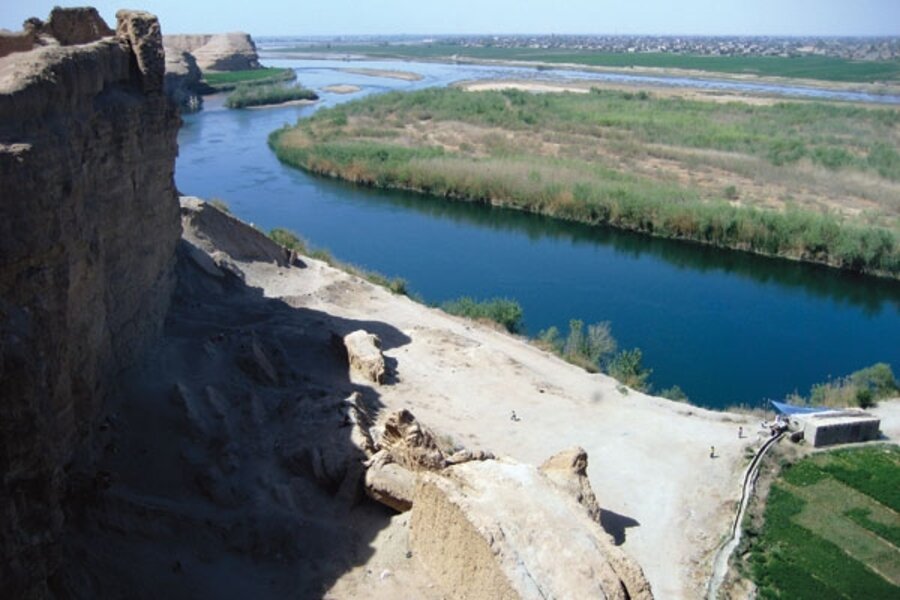Syria: Where war hides history
Loading...
| Dura-Europs, Syria
• A local, slice-of-life story from a Monitor correspondent.
Syria is Damascus to the growing number of Western tourists here. A short trip to the Greek desert city of Palmyra, about halfway to the Euphrates from the capital, is often as far east as visitors go.
Down the highway, however, where the Euphrates greens a strip of the rocky landscape, is a corner of the country less known for historical sights than for its proximity to war-torn Iraq. It is from here that militants have entered Iraq since the American invasion in 2003. The conflict has left Dura-Europos largely unseen by tourists.
But on a cliff overlooking the Euphrates less than 30 miles from Iraq, where Roman soldiers once watched for invading Persians, it’s possible to imagine life in the fortified desert city of Dura-Europos 2,000 years ago. Founded in 300 BC by Seleucus, one of Alexander the Great’s generals, it was a cosmopolitan outpost; first Hellenistic, then Roman – home to Greeks, Syrians, Christians, and Jews.
The synagogue on a side street by the still-standing mud-brick walls was preserved under sand, like so much of Dura, for more than 1,500 years. British soldiers coming from recently occupied Iraq stumbled upon the city in 1920; an American archaeologist excavated the synagogue in 1932.
Shipped to Damascus, where it was rebuilt, the synagogue is one of the oldest and most unique Jewish monuments in antiquity – on display at the Syrian National Museum. Its frescoed walls depict such vibrant biblical scenes that it was originally thought to be a Greek temple.
Today a Syrian guide, while prohibiting flash photographs to preserve the murals’ original colors, happily explains the scriptural stories and the history of the synagogue’s discovery.
Downstream from Dura-Europos, approaching the border town of Abu Kamal, sits the ancient Sumerian and Amorite city of Mari, circa 4,000 BC. Abu Kamel’s notoriety is due to the American helicopter raid from Iraq last fall that killed eight Syrians in a nearby village. Damascus said they were all civilians – farmers and fisherman – while Washington said they were terrorists.
More than 3,500 years ago, when Mari was at its peak under the ruler Zimri-Lim, whose vast, 300-room palace was the envy of the region, Hammurabi invaded from Babylon and sacked the city. But the deep walls and hallways of Zimri-Lim’s Mari palace remain today, protected for millenniums under sand.
In this eastern corner of Syria, whose life is the river, antiquities compete with politics and the border with Iraq. Farther upstream near Deir ez-Zor, the regional capital, are the remains of a possible nuclear facility, bombed by Israel in 2007.





